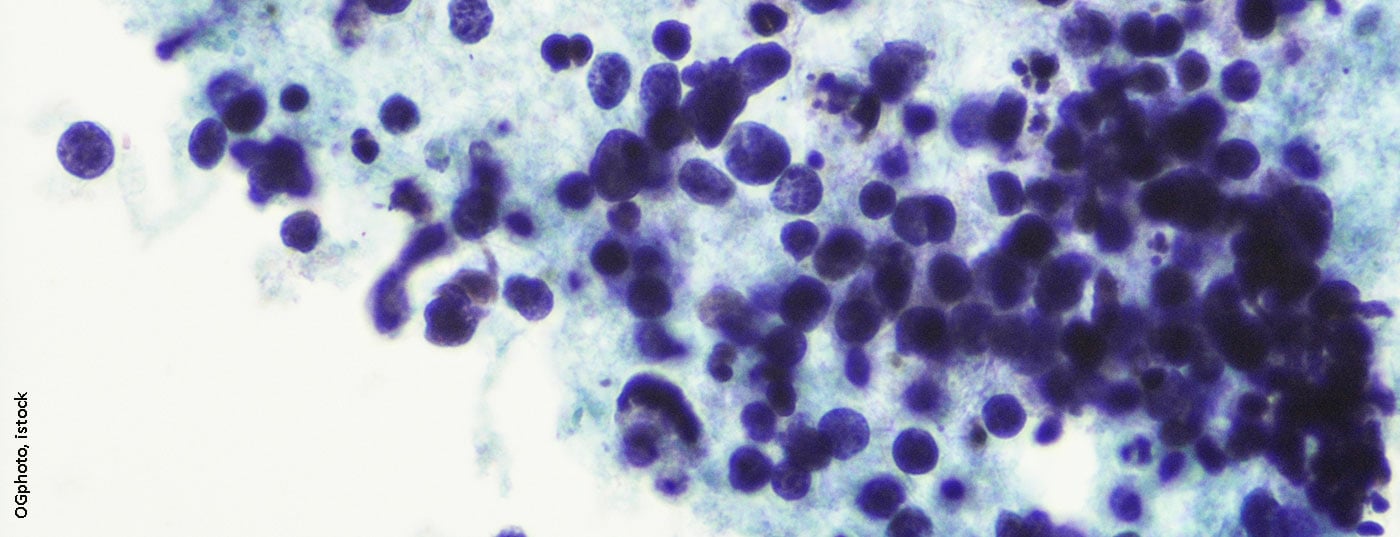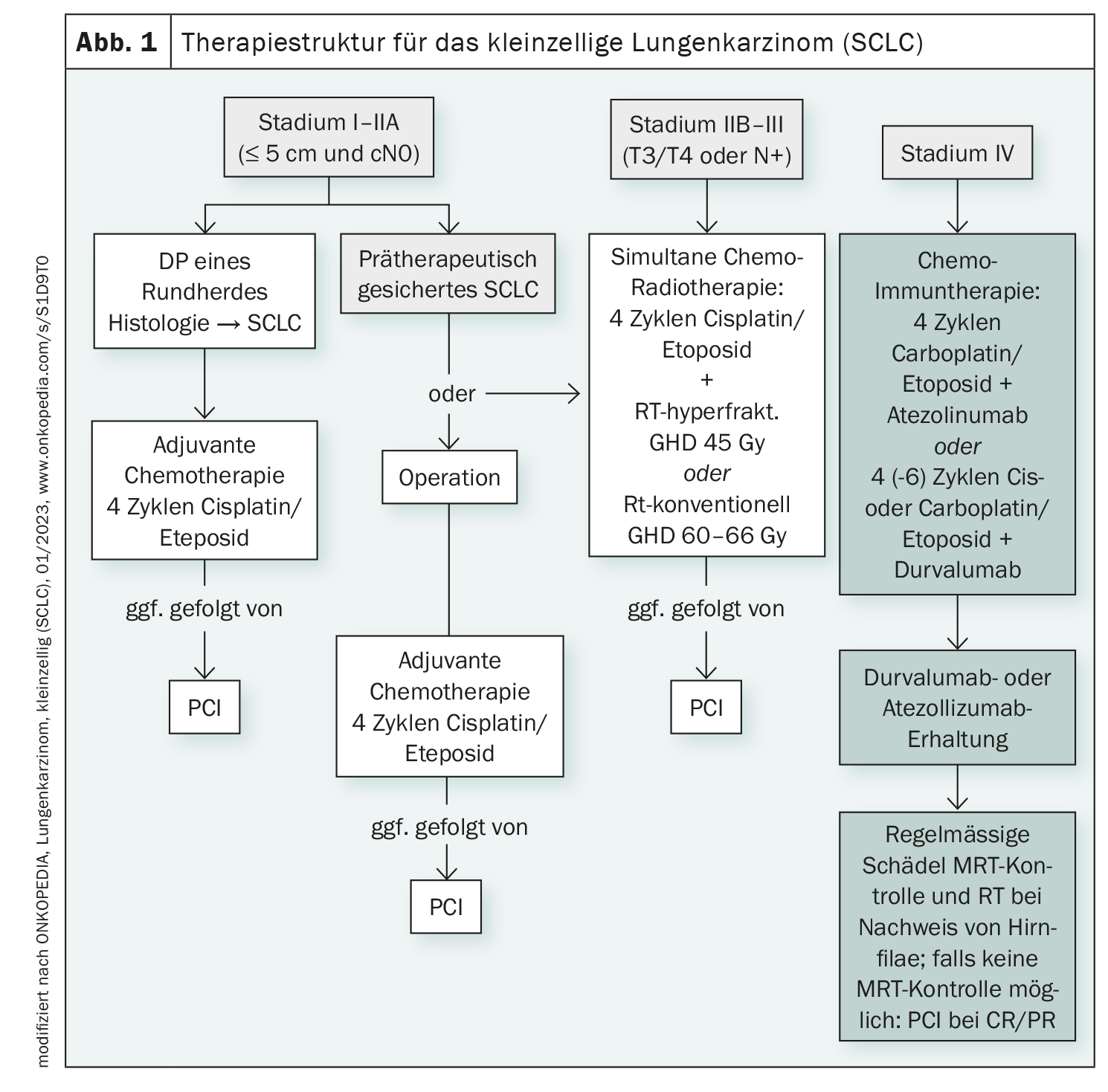Small cell lung carcinomas must be treated quickly – they usually grow rapidly and form metastases early on. The diagnosis is therefore often only made at an advanced stage. Lung cancer is the most common cause of cancer-related death in both men and women. Comprehensive treatment management is therefore indicated.
The most common cancers in Switzerland are prostate cancer in men, breast cancer in women, lung cancer, colon cancer and melanoma. However, mortality is highest for lung cancer. The 5-year survival rate for patients with advanced-stage small cell lung cancer is less than 10%. Small cell lung cancer (SCLC) accounts for around 12-15% of lung cancers. They are characterized by high cell division rates and rapid growth progression. For this reason, SCLC has usually already spread to other organs by the time it is diagnosed. It develops from the epithelial cells of the lungs from the central bronchi to the alveoli. The main risk factor for lung cancer is tobacco consumption. Smokers have an approximately 60% higher risk of SCLC. However, a family history of bronchial carcinomas, previous lung diseases, exposure to asbestos, arsenic, chromium or particulate matter as well as HIV infections can also favor the development of small cell lung carcinoma. Chronic cough, recurrent colds, coughing up blood, shortness of breath and chest pain may indicate SCLC. Another special feature is the frequent occurrence of paraneoplastic syndromes that are not associated with the disease itself. Non-specific symptoms such as fatigue, loss of appetite and weight gain or loss, muscle weakness, problems with balance or walking, changes in mental status and changes in skin color, texture and facial features are often due to the hormones produced by the SCLC cells. They can be caused by diseases such as Schwartz-Bartter syndrome, Cushing’s syndrome, Lambert-Eaton syndrome or hypercalcemia.
Staging supports treatment management
There are four stages of the disease, which are subdivided into further subgroups. Which of these stages I-IV a tumor is classified as depends on the extent of the tumor (T), the lymph node involvement (N) and the presence of metastases. (M) from. These TNM characteristics can then be classified as Very Limited Disease, Limited Disease and Extensive Disease according to the Veterans Administration Lung Study.
Chemotherapy and its combinations
The treatment recommendations are based on the stage classification (Fig. 1) . The most effective form of treatment for small cell lung cancer is drug-based tumor therapy (chemotherapy and immunotherapy). Chemotherapy in combination with surgery and/or radiotherapy is curative for limited disease. In severely affected patients (extensive disease), a considerable increase in survival time can now be achieved in addition to symptom improvement. Patients with metastatic SCLC therefore receive a combination of chemotherapy and immunotherapy. The addition of immunotherapy has tripled the 3-year survival rates of patients compared to chemotherapy alone.
Further reading:
- ONKOPEDIA, Lungenkarzinom, kleinzellig (SCLC), 01/2023; Verfügbar unter: www.onkopedia.com/de/onkopedia/guidelines/lungenkarzinom-kleinzellig-sclc/@@guideline/html/index.html (letzter Zugriff am 24.10.2023)
- www.krebsinformationsdienst.de/tumorarten/lungenkrebs/kleinzelliges-bronchialkarzinom-sclc.php (last accessed on 10/24/2023)
- www.journalonko.de/thema/lesen/sclc_ueberblick_kleinzellige_lungenkarzinom (last accessed on 24.10.2023).
InFo ONKOLOGIE & HÄMATOLOGIE 2023; 11(5): 32
InFo PNEUMOLOGIE & ALLERGOLOGIE 2023: 5(4): 42













